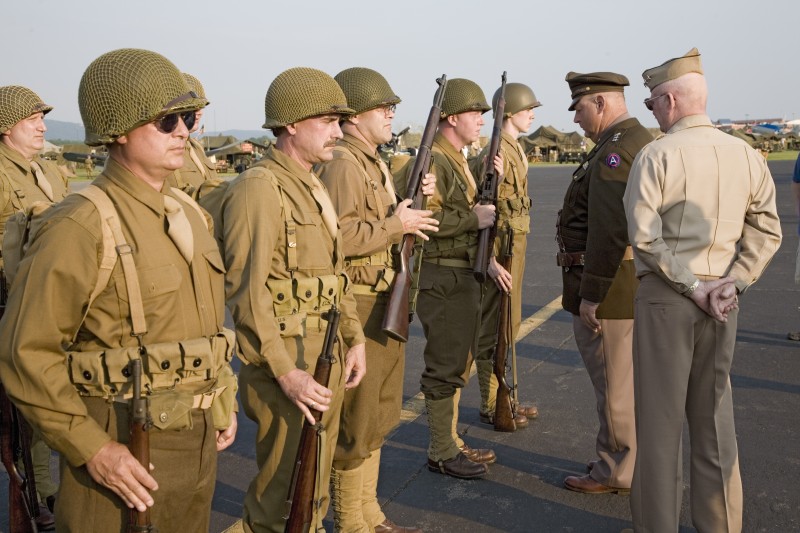
In the book Hagakure, the author talks about the stories of the samurai, their history, important people among them, and many other relevant stories. The story provides advice about how to deal with and lead people—advice that still holds as true today as it did several centuries ago. One part of the book talks about how to address issues with people. The author says something to the effect of, “It’s far better to tell someone a story about yourself and what you did or change you made as a result of a certain situation rather than to address them directly about it. It is the person’s natural response to push back if you push them. If you lead them to a conclusion and they get it, then the problem is solved. If they do not get to the conclusion, it is of no consequence, as they did not start to revolt against you because of your suggestion.” It also goes on to say that if you are facing a situation that you need to address directly, do so in private. Any time you try to do this with more than you and the other party around, the other party will feel attacked regardless of what you say.
RECENT: Championship Nature Series: The Circles of Concern and Influence
These two points are the ones on which I have based a lot of my coaching/mentoring career. I have seen issues arise with a team and have addressed them by using various parables. They never take more than three to five minutes to tell from start to finish, plus the time it takes for the listeners to talk about them. We take common parables, historical figures, and anything else that comes to mind to illustrate our points. Even if it does not get a person on board at the time, it does not push him or her further away, either, so we can try from another position. The ancient Greeks were also famous for this, as they used parables known as fables to teach right from wrong. We all heard of Aesop’s fables when we were little, too. In my career, the parables I’ve used—similar to those shared in the past—have been short and have had specific underlying meanings, which is great because college athletes typically have a short attention span.
This month, we’re going to discuss two historical figures. Sometimes people have heard about a parable figure you’re discussing, and that makes it even more powerful. I won’t discuss both of them in the same day but rather on two different days. The first figure, General George S. Patton, the leader of the Third Army during World War II, provides some views on leadership—specifically, what to do and how to lead through your imperfections. This is often great for rising seniors to hear. Sometimes I’ll even throw in unique things about Patton—for example, he never wanted to be recorded because he hated the sound of his own voice. Adding in these insecurities sometimes encourages those who are afraid to lead due to their own insecurities, as they can see someone else who overcame his or her own insecurities to become a great leader, and this helps them to come out of their shells. The second person I plan to discuss is James J. Braddock, with my focus mostly being on visualization. I will talk about changing values and about how he became soft when he had all of the money in the world but then realized what he needed to fight for when he needed to feed his family. In addition, when asked what fueled his resurgence to the top, he answered, “Milk.”
Most historical figures aren’t single-faceted, and if your athletes truly connect with them, you can bring other aspects of them to light to aid them in their journeys.
World War II Infantry troops standing at attention with General George Patton reviewing the troops at Mid-Atlantic Air Museum World War II Weekend and Reenactment in Reading, PA held June 18, 2008. Image credit: Visions Of America LLC © 123rf.com
General George S. Patton
Who he was
General George S. Patton was the leader of the Third Army during World War II. He is considered to be the reason that the United States had such a dominating effort over the Third Reich. General Patton was often called “one arrogant S.O.B., but he’s our arrogant S.O.B.” Patton believed that he was not only the greatest soldier to walk the face of the earth but also the best military leader. He spoke often of his greatness, his army’s greatness, and why his country would dominate the war. He spoke of this so often that his men believed that as long as they were fighting for General George S. Patton, they were unbeatable.
Patton utilized a constant re-enforcement for his men, how they were great, why they were great, what they would do to perpetuate that greatness, and how they would defeat the enemy. He rallied his troops around these re-enforcements and used them as inspiration.
What we can learn from him
- Repetition. Patton said things over and over again, and he did so passionately. He made his men believe that they were the best fighting machines on the planet.
- Believe you’re the best. There is an old saying that goes like this: “If you think you can or you can’t, you’re right.”If you believe you’re the best and capable of doing anything, you’re right.
- Always go hard. Patton had an excellent quote for his tactics in war: “Men, in war, there is no defense, there is only attack, attack, and more attack.” He didn’t believe in not going full steam ahead. His men were either attacking, regrouping, or training.
- Be effective, and don’t worry about being perfect. Patton often said that a good plan carried out aggressively today is better than a perfect plan carried out next week. It’s not about being perfect—it’s about being effective. A tally in the win column is not denoted any differently. Winning ugly is better than losing pretty.
- Lead by example. Patton led his troops from a jeep on the front lines. He believed that to be an effective leader, you have to be on the front lines, in front of the team. Leading by example inspires people to go harder.
James J. Braddock
Who he was
The name might ring a faint bell in some people’s heads, but if someone utters “The Cinderella Man,” that’s when the lights go off in their heads. James J. Braddock is an excellent example of someone who overcame his circumstances to become a champion. He faced the Great Depression, in which he lost everything, but ended up on top anyhow.
It would be easy to talk about how he trained with no food in his belly, overcame his family issues, overcame poverty, overcame personal issues, etc. But one thing someone can take from The Cinderella Man that is less visible is how Braddock used visualization.
Braddock was having a fight set up with Max Baer, who had killed two men in the ring at that point. Baer had a tremendous punch, and it would have to be avoided if Braddock was going to survive the fight, let alone win it. Braddock was old and slow compared with his youthful, quick, and powerful adversary. Braddock watched film of Baer fight and saw what happened every time Baer went for the power punch. Braddock then went over this time and time again in his head. He would feel the hot ring lights bearing down on him, feel the sweat on his brow, see Baer drawing back for the punch, and see where the counter lay. In this visualization, Braddock saw himself, again and again, countering the punch because he saw it coming. He didn’t do this once but rather over and over again.
In the fight, when Baer drew back for his powerful, murderous punch, Braddock had him countered. Baer never got off a single trademark punch. The rest, they say, is history.
What we can learn from him
We can learn from James J. “Cinderella Man” Braddock that we can use visualization to overcome our opponents. By putting yourself in situations with your opponents time and time again through visualization, you set yourself up to react naturally when you get to the playing field.
Use visualization, overcome your adversaries, and compete like a champion today.











